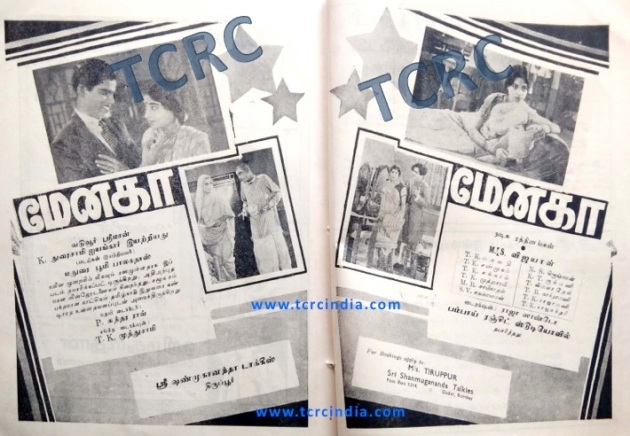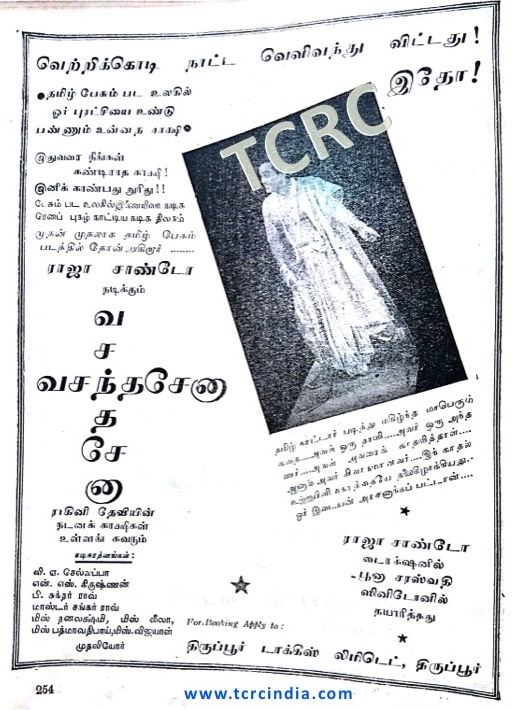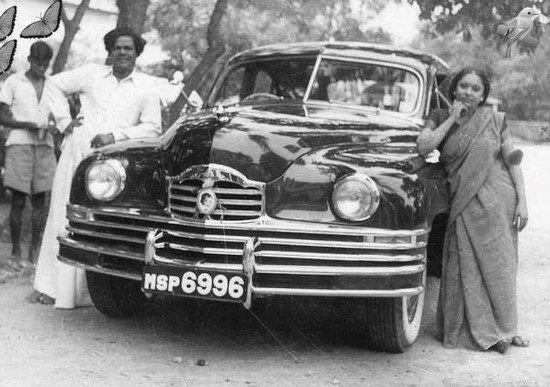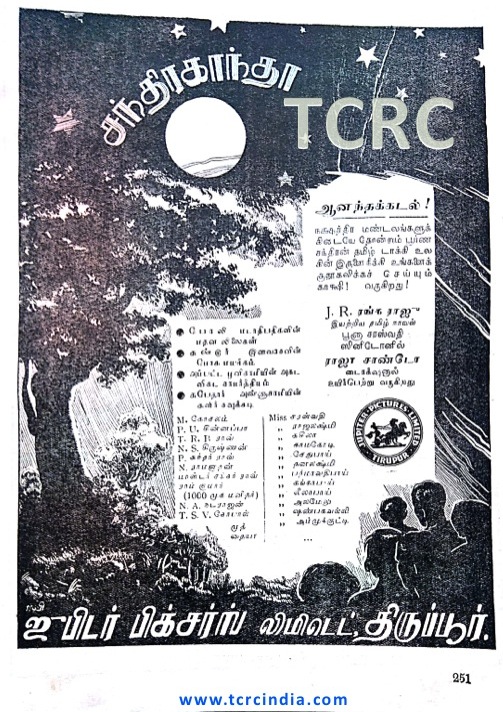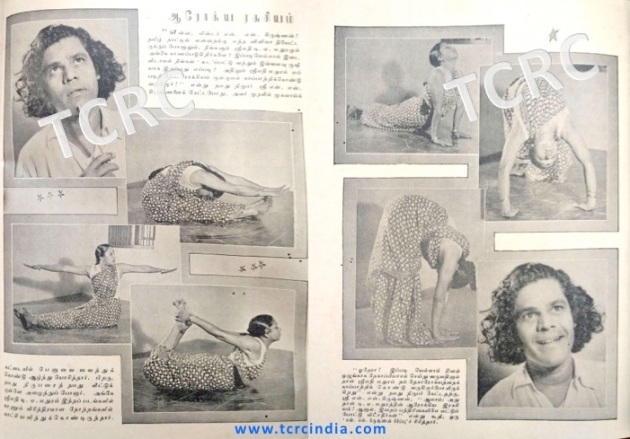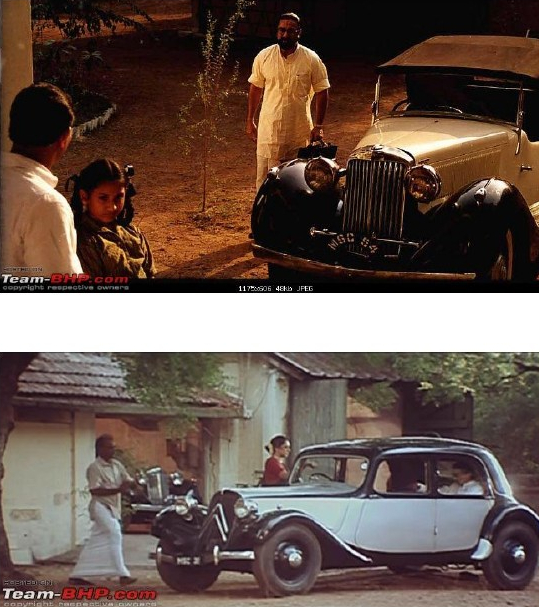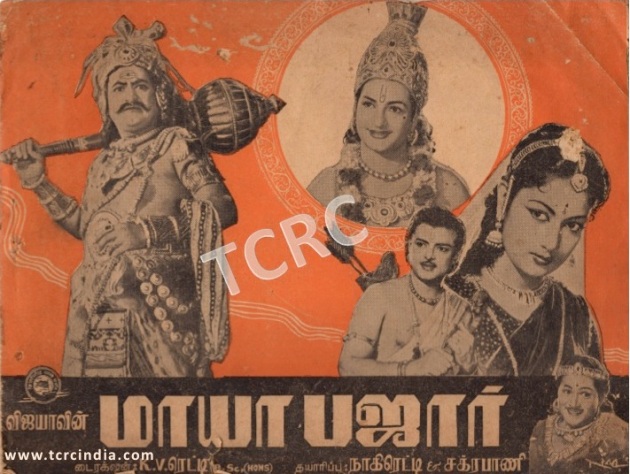By Sugeeth Krishnamoorthy
Introduction: Of thousands of mythological stories passed on to us today by our ancestors, possibly no other story could have a more direct and closer bearing to us now than the story of Lord Muruga—who is the Native God of the ancient Tamil people. Valli Thirumanam tells the story of how Valli, a tribal girl, came to be Lord Murugan’s second wife. This story has been passed on orally through storytelling and staged plays, long before the print medium arrived. Even today, Valli Thirumanam continues to be one of the most popular plays in rural India, although, like most contemporary stages of its nature, they unfortunately smack of vulgarity, rendering the ‘Bhakthi’ rather ineffective. Though, only a century ago, rural stage drama was an effective means for disseminating ‘Bhakthi’ propaganda and reaching out to the masses. it has sadly declined now.

Valli Thirumanam by Shankardas Swamigal PC: unknown
Given its huge reach and its evolution over time, the story of Valli Thirumanam has undergone some minor changes here and there, the central theme—the challenges faced by Lord Muruga during his courtship of Valli—have been universally retained.
The play was also published in the literary form as well, and article reviews one such adaptation by Pammal Sammandha Mudaliar, for reference[1]. This play was published under the title ‘Valli Manam’ in the late 1930s. The second edition of this book was published in the year 1940. [2]
Story Synopsis : Nambirajan the tribal chief, fails to send Valli, his beautiful duaghter, tend to the millet crops. The customary practice of the tribe is to send girls of marriageable age to look after and keep vigil on the crop, a portion of whose harvest is to be offered to Lord Subramanyam. The failure of tribal chief to carry out this duty is believed (by the Priest) to anger the Lord, which causes all crop to fail subsequently. Nambirajan, realising his folly, orders Valli, to leave for the forest immediately, taking her friend along. Valli requests Nambirajan to send the youngest of her elder brothers, ‘Kutti Anna’,along as well and the chief agrees. Kutti Anna, as we infer from the play, is possibly not of sound mind, and the playwright has modified this character’s dialogues[3] to infuse humour in the play.
During her sojourn, Lord Murugan appears in Valli’s dream and becomes the object of her affections. Firm in her love for him, she refuses to entertain other suitors. Lord Naradar who has come to earth, chances to hear a sweet voice and is surprised to discover that it belongs to a lovely girl albeit from the tribal community.[4] On enquiring he comes to know that Valli was born of noble birth to a deer that abandoned her in a tangle of creepers[5] immediately after birth. Nambirajan, who already had seven sons found her amidst the bushes and adoped her. In the past, Lord Murugan had helped Naradar, and so, as a token of gratitude, Naradar decides to offer Valli as a bride to the Lord as Guru Dakshina. When he reveals his plans to Valli, he is shocked at her downright refusal and at her claims of having fallen in love with a man who appeared in her dreams. Naradar vows to get Valli married to Murugan. Knowing that Murugan, already married to Deivanai (also proposed by him) would be alarmed at this second proposal, Narada goes armed with the plea that he has already taken a vow or sabatham and that it must be seen through. He prevails upon Murugan to help him complete his sabatham, even if that means taking Valli against her own will.
To do so, Murugan then takes the avatar of a tribal hunter, who tries to woo Valli in the forest. When she doesn’t relent, he becomes a magic tree, and still later a lecherous old man whose every advance and proposal of marriage is rebuffed. Valli remains set in her adorations. praying to her Lord during every tribulation to protect her.
In the face of this failure, Lord Murugan seeks the blessing of his brother Vinayagar, hoping that this may help him achieve success. Assuming the guise of the ‘old man’ again, he invokes his brother who appears in the form of a wild rampaging elephant in the forests where Valli tends to her crop. Chased by the elephant, she calls out in fear to the Old Man. He promises to help on the condition that she marries him, to which she agrees, in desperation. Happy at having succeeded in his mission, he calls off the elephant (his brother), which vanishes.
When he seeks the reward of marriage, Valli, who has come out of her fear-crazed state, refuses again. Defeated yet again, but not willing to give up yet, he goes against the rules of the game and recalls his brother in the form of the elephant, asking him to trouble her.
Vexed and helpless, Valli calls out to Lord Murugan for protection. Murugan, who can no longer ignore the earnest pleas of the unswervingly loyal Valli, makes the elephant, the ‘old man’ and the tree disappear and appears in their place, promising to take her away and marry her.
When Valli is chased by the Wild Elephant, she agrees to marry, and Murugan sends back the Elephant. She later refuses to marry him. This cannot happen, since Valli has given her word and promises could not be broken in Hindu mythology. So, here lies the catch.
When chased by the Wild Elephant, Valli says this out of fear – ‘Okay, I will marry’ ( She does not specify who to the ‘Old Man’, she only said that ‘she will marry’, and in her heart, she promises to marry only Lord Murugan). The happy old man sends back the elephant.
Later, when the Old man seeks her hand in marriage, she now says, I said ‘Okay, I will marry’ but did not say ‘Okay, I will marry you’.
So, technically, Valli has not broken her promise to the old man. It was the old man, who was fooled
When Valli seeks forgiveness for insulting the ‘hunter’ and the ‘old man’, he forgives her and sends her home. But he is not yet done with his trickery.
Taking another disguise, he goes to her father, the Tribal Chief, and warns of the schemes of a thief to kidnap his daughter. The Chief dispatches his sons to keep vigil. However, Murugan manages to steal into the house unnoticed (by the sleeping brothers) and takes off with Valli to Kazhagu Malai, setting the king and the brothers on a chase. Eventually, Murugan reveals himself to the family.
The family seeks his forgiveness, but Murugan refuses. He says that he is now the ‘son-in-law’ of the family and cannot forgive them, but will still be magnanimous enough of give them his blessings. Valli and Murugan are then married and live happily ever after.
Analysis : The story gives us elements of understanding of our own history. At some point in time, may be thousands of years ago, our ancestors were migrants. They were tribals and the concrete jungles in which we live today, were once agricultural lands and forests. In the play, we understand large forest lands are slowly being transformed into agricultural lands where ‘Thinai’ (millets) are grown. We surmise that lands were part of the forests as characters in the play mention the sight of wild animals like tigers, bears and wild elephants.[6]
The drama also reinforces the long accepted practice of polygamy. The happenings in this drama beg the questions: How could Lord Murugan, who was already married, accept another woman in his life? Why should Valli waive her rights to conjugal exclusivity, and share them with Deivanai? In the play, there is little attention given to Deivanai, and her reaction to this arrangement is only to be assumed as being favourable (as suggested by the fact that they all live together).[7] Naradar is not free of blame either, letting his ego overcome the fact that Lord Murugan was already married to a bride brought by him
The other aspect that is very clearly visible throughout the drama is the ‘male dominated society’ of its time. Murugan, Naradar, Vinayagar[8] are al male chauvinists at some level, and the women are accepting and submissive.
For instance, Valli seeks forgiveness to Lord Murugan, for shouting at his various avatars (the hunter, the tree and the old man), and Murugan graciously agrees to forgive her. But common sense says that it was in fact Murugan’s fault in the mater, and Valli was entirely innocent as she had no idea that it was her Lord Murugan taunting her. Logically, shouldn’t Murugan have sought Valli’s forgiveness?
This leads to the other interesting question. Why then, did Lord Murugan have to take various avatars to conquer Valli, and more importantly, taunt and frustrate her at various points? When he knew that Valli desired him, all that he needed to do was to go to her in his original form. Obviously, if that was so simple, there would be no story to begin with, so the author offers an explanation, which appears logical on the face of it:
Valli desires to marry Lord Murugan and tells Lord Naradar that she would marry only the man of her dreams. Now Murugan has to fulfill this wish of Valli. But Naradar, on being insulted by Valli’s outright rejection of his proposed (but undisclosed) suitor, vows to avenge his defeat. Without knowing who was actually inside Valli’s heart, he swore that Valli would end up marrying Lord Murugan and no one else. So, he goes to Lord Murugan and tells him that there is someone else in Valli’s heart, but he should conquer and marry her, come what may.[9] So, Lord Murugan, in order to appease both his devotees, has to play a balancing act wherein he has to take on various guises to taunt Valli (to humour Narada), but finally appears as himself (the only guise Valli recognises) to ask for Valli’s hand in marriage. He thereby fulfills the wishes of both Valli and Naradar making it a win-win situation for them.
Scientific Approach Analysis : “Valli Thirumanam’ can also be explained through a more scientific approach. By the standards of her time, Valli was definitely a ‘hot headed’ and independent woman, who insisted on choosing her own life partner. It was natural therefore that the ablest of the opposite sex would fight it out and the winner would be the one chosen to produce through marriage the finest (healthiest) offspring. So, there is the need for an alpha-male in this context. Here, Lord Murugan plays that role.
The alpha-male ( Lord Murugan) must seduce and subdue ‘unyielding, stubborn, and egoistical’ female ( Valli) and win her over, all the while demonstrating his superior prowess through song, lyricality, poetics and histrionics, and heroism to convey his (physiological and reproductive) superiority as a suitor
Film Versions : Valli Thirumanam has been adapted many times to the film format. The iconic R.Natraja Mudaliar made the play a silent film in the early 1920s. It was made into a ‘Talkie’ in the year 1933. It was made as a film in the 60s, as well, but for this analysis, we chose the film ‘Sri Valli’ made by A.V. Meiyappan in the year 1945. Although the film bears a slightly different name, the core elements of the film are the same.

Valli Thirumanam (1933) an ad from The Indian Express archives
T.R. Mahalingam plays the lead role of Lord Muruga, while the role of Valli is played by Kumari Rukmini[10]. The film’s script retains basic elements of the legendary script.
In the film, the hunting party of the tribal chief finds an abandoned baby girl. The chief picks up the girl and adopts her. The girl grows up into a charming maiden, who is subsequently sent to the Thinaipunam[11] —to tend to the chief’s crop —along with her friend and her youngest, elder brother ‘Kutti Anna’ ( also called ‘Killi’ in the film version.) This role was essayed by the legendary comedy actor T.R. Ramachandran, whose clever emoting and body language, suited the role ( of a man of stunted emotional and intellectual development) to a T.
The aspects of Lord Naradar meeting Valli, the subsequent challenges, Lord Murugan’s avatars as the hunter, the magic tree and the lecherous old man have more or less been retained in the corresponding scenes of the film version. The film provides additional weightage to the scene where Valliis been chased by the wild elephant—a classic AVM company marketing strategy. There are minor changes to the script. For example, in the scenes where the Chief sees Valli with another man, feels ashamed and puts her in prison; where Lord Murugan rescues her, slays his pursuers (using his divine powers), and then revives them upon Valli’s earnest appeals; and where the chief then humbly requests Lord Murugan to accept his daughter in marriage, which Lord Murugan does.
The movie ends with the marriage of Murugan to Valli and a still frame of Murugan with Valli and Deivanai, on either side.
Additional Commercial Elements in Film :
- Songs and Aesthetics: A film made on this scale should naturally have additional filler elements, unlike a stage play. The songs rendered by the lead pairs were great hits. In fact, the ‘Meiyyadha maan’ song is very popular even today. [12] The ‘Mayile Thoothu Sellaiyo’ song is also quite pleasant to hear. The scenes with the Thinaipunam set in a large tract of forest land is convincing and aesthetically pleasing as the studio sets have been designed to simulate large swathes of open land, with accents such as birds, like the peacock, which elevates it even further. Fortunately for us, a good print of this film has survived, the viewing of which will surely help us appreciate the film better.
- Comedy Track: In the original play, ‘Kutti Annan’ has no romantic interest, but in the film version, there is an attempt to create a love interest for him, in the form of Valli’s friend who is part of her entourage. Also part of this story line are the almost invariable comedy couple fixtures of T.R. Mathuram and N.S. Krishnan. Subamma (T.R.Mathuram) plays the role of a sanskaari woman who lives in wait for her athai paiyan[13], despite knowing that he is in love with Valli. Later, he realises his folly and with the help of Lord Muruga, he marries Subamma.
- Bharathanatyam: The late ‘30s saw a political and cultural movement strongly in favour of reviving Bharatanatyam[14]. Baby Kamala[15] had come to become the symbol of this revival in film. So, Bharatanatyam was used in many films, mainly as an additional commercial element, even if it had no logical bearing to the original script of the film. In this film, Kamala plays the role of the younger Valli, who performs Bharatanatyam to a song in the film,[16] although how a girl born and bred in a tribal community with no exposure to the art could do so, obviously defies logic.
Valli’s characterisation in the film: Consistent with that in the play, Valli’s portrayal is that of an egoistic, dominant and an arrogant female in the film. In fact, she even calls the Vedan (Hunter) ‘da’ in retaliation when he called her ‘di’. Valli’s nature is accentuated by using Subamma’s polar opposite character as a foil. Subamma is very submissive, and the suggestive lyrics that she sings out also tells us about her, when she calls out to her Machaan (N.S.Krishnan) and tells him “I will even behave like a prostitute ( if need be) and enhance your pleasure”[17]. So possibly, the question being posed in the perspective of a male (chauvinist) of the time could have been, “if Subamma could be like this, why should Valli be like that?”, thereby adding more weight to Valli’s character in the film.
The film presents a great opportunity for us to understand various facets of life, not only of our own past, but of early Tamil cinema, of society and its thinchief. Since, the copyright of the film has possibly expired, the film can be seen on public access websites like YouTube. [18]
REFERENCES:
[1] Another version of ‘Valli Thirumanam’ available on the Internet has been penned by the legendary playwright— Sankaradas Swamigal. This version, along with the original song couplets which were played on stage, can be downloaded from the Tamil Heritage Foundation website: http://www.tamilheritage.org/old/text/ebook/ebook.html
[2] The book is available for free download on the ‘Internet Archive’, as the copyright of the book has likelu expired.
[3] While all the characters speak in Literature based Tamil, Kutti Anna speaks in Local Madras Bashai. “Annathai’ instead of ‘Anna’ for example. The character has now been replaced on stage by a dedicated buffoon.
[4] Elements of Racism – Naradar cannot believe that a girl from the Tribal community look so divine and have such a sweet voice.
[5] Valli Kodi (creeper)
– Hence, she was named Valli.
[6] Valli was once chased by a wild elephant, and ever since was in fear of wild elephants. Lord Murugan uses the knowledge of her fear to his advantage while seeking her marriage.
[7] Through an equivalent form of ‘divorce’ or otherwise.
[8] Who agrees to come in the form of a wild elephant and frighten Valli.
[9] Again, another example of male chauvinism— Naradar felt that upholding his vow of marrying Valli to Murugan, to preserve his ego, was more important than Valli’s desire to marry someone of her own choice.
[10] Actress Lakshmi’s mother.
[11] Forest Lands, where Thinai ( Millet) was grown.
[12] This song has even been satirised in local TV Programs that offer stand-up comedy.
[13] First Maternal cousin— It is customary for maternal cousins to marry amongst themselves in Tamilnadu.
[14] The political movement was launched against Devadasi women, who had allegedly added erotic elements to a traditionally pure dance form and polluted it. The advocates of the Anti-Nautch movement wanted to bring the Devadasi girls to mainstream society and purify and restore the dance as a symbol of culture and Bhakti. This has been described in the ‘Sevasadanam’ article.
[15] Baby Kamala was a child prodigy and her Bharatanatyam skills were used extensively.
[16] The older Valli ( Kumari Rukmini) also performs Bharathanatyam in this film.
[17] The phrase Daasiyai Pol Nadandhu Inbam Kooduven in the song ‘Amman Maganai Nee Aati Vekira’ is a typical male chauvinistic song.
[18]Film Viewing Link—https://www.youtube.com/watch?v=5oCVp7BDvkM
